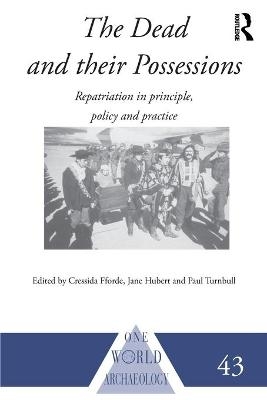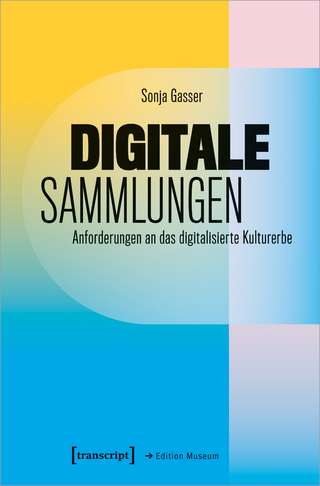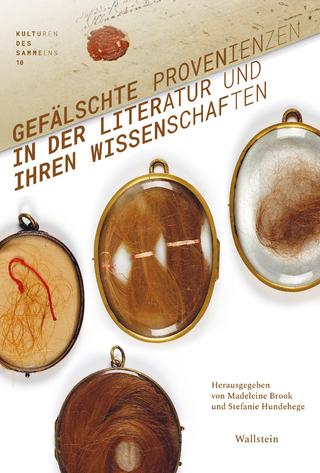
The Dead and their Possessions
Routledge (Verlag)
978-0-415-34449-4 (ISBN)
Inspired by a key session for the World Archaeological Congress in South Africa, The Dead and their Possessions is the first book to tackle the principle, policy and practice of repatriating museum artefacts, rather than cultural heritage in general.
Increasingly, indigenous people world-wide are asserting their fundamental right to determine the future of the human remains of their ancestors, and are requesting their return, often for reburial, with varying degrees of success. This repatriation campaign has become hugely significant in universities and museums where human remains uncovered through archaeological excavation have been retained for the scientific study of past populations.
This book will be invaluable to those involved in the collection and repatriation of remains and cultural objects to indigenous groups.
Cressida Fforde is an independent researcher and holds an honorary post at the Institute of Archaeology, University of London. Jane Hubert is Senior Research Fellow and Honorary Senior Lecturer in the Dept of Psychiatry of Disability at St George's Hospital Medical School. Paul Turnball is Senior Research Fellow, Centre for Cross-Cultural Research, Australian National University
List of figures, List of tables, List of contributors, Series editors’ foreword, Preface to the paperback edition, Preface, Introduction: the reburial issue in the twenty-first century, 1. Repatriation as healing the wounds of the trauma of history: cases of Native Americans in the United States of America, 2. Collection, repatriation and identity, 3. Saami skulls, anthropological race research and the repatriation question in Norway, 4. Skeletal remains of the Norwegian Saami, 5. Indigenous Australian people, their defence of the dead and native title, 6. Bone reburial in Israel: legal restrictions and methodological implications, 7. A decade after the Vermillion Accord: what has changed and what has not?, 8. Academic freedom, stewardship and cultural heritage: weighing the interests of stakeholders in crafting repatriation approaches, 9. Implementing a ‘true compromise’: the Native American Graves Protection and Repatriation Act after ten years, 10. Repatriation in the USA: a decade of federal agency activities under NAGPRA, 11. Artefactual awareness: Spiro Mounds, grave goods and politics, 12. Implementation of NAGPRA: the Peabody Museum of Archaeology and Ethnology, Harvard, 13. Ka Huaka‘i O Na- ‘O–iwi: the Journey Home, 14. Implementing repatriation in the United States: issues raised and lessons learned, 15. The plundered past: Britain’s challenge for the future, 16. One hundred and sixty years of exile: Vaimaca Pirú and the campaign to repatriate his remains to Uruguay, 17. Tambo, 18. Yagan, 19. The connection between archaeological treasures and the Khoisan people, 20. Missing persons and stolen bodies: the repatriation of ‘El Negro’ to Botswana, 21. The reburial of human remains at Thulamela, Kruger National Park, South Africa, 22. ‘Ndi nnyi ane a do dzhia marambo?’ – ‘who will take the bones?’: excavations at Matoks, Northern Province, South Africa, 23. The reburial issue in Argentina: a growing conflict, 24. Partnership in museums: a tribal Maori response to repatriation, 25. Indigenous governance in museums: a case study, the Auckland War Memorial Museum, 26. Developments in the repatriation of human remains and other cultural items in Queensland, Australia, 27. Practicalities in the return of remains: the importance of provenance and the question of unprovenanced remains, 28. Heritage that hurts: the case of the grave of Cecil John Rhodes in the Matopos National Park, Zimbabwe, Index
| Erscheint lt. Verlag | 24.6.2004 |
|---|---|
| Reihe/Serie | One World Archaeology |
| Zusatzinfo | 2 Line drawings, black and white; 29 Illustrations, black and white |
| Verlagsort | London |
| Sprache | englisch |
| Maße | 156 x 234 mm |
| Gewicht | 670 g |
| Themenwelt | Kunst / Musik / Theater |
| Geisteswissenschaften ► Archäologie | |
| Geisteswissenschaften ► Geschichte ► Hilfswissenschaften | |
| Sozialwissenschaften ► Soziologie | |
| ISBN-10 | 0-415-34449-2 / 0415344492 |
| ISBN-13 | 978-0-415-34449-4 / 9780415344494 |
| Zustand | Neuware |
| Haben Sie eine Frage zum Produkt? |
aus dem Bereich


